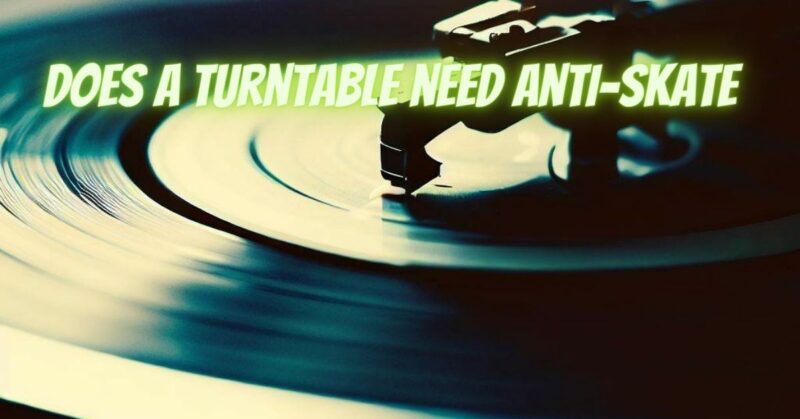When it comes to vinyl records, turntables play a crucial role in delivering high-quality audio. Audiophiles and music enthusiasts often debate the necessity of various features found on turntables, and one such feature is the anti-skate mechanism. In this article, we delve into the significance of anti-skate and its role in preserving audio fidelity during playback.
What is Anti-Skate? Anti-skate, also known as bias compensation, is a feature commonly found on modern turntables. It counteracts the natural inward force exerted on the tonearm by the record groove, which can cause the stylus to “skate” across the record surface. Anti-skate applies an opposing force, pulling the tonearm slightly inward to maintain proper tracking and mitigate the potential negative effects of skating.
Preserving Audio Fidelity:
- Reducing Inner Groove Distortion: As a record plays, the groove gradually becomes narrower and closer to the center. Without anti-skate, the stylus may exert excessive pressure on the inner grooves, leading to distortion and imbalanced sound reproduction. By applying the appropriate anti-skate force, the stylus can remain centered within the groove, ensuring accurate tracking and minimizing distortion.
- Minimizing Channel Imbalance: Stereo recordings distribute the left and right audio channels on the record. Uneven skating force can cause the stylus to favor one channel over the other, resulting in an imbalanced audio presentation. Anti-skate helps to maintain proper channel balance by preventing the stylus from veering towards either side of the groove.
- Extending Stylus and Record Life: Skating not only affects audio quality but can also cause unnecessary wear on both the stylus and the record itself. Excessive skate forces can result in uneven wear, groove damage, and premature stylus deterioration. Anti-skate ensures that the stylus glides smoothly along the groove, reducing the risk of excessive wear and preserving the longevity of both the stylus and the record.
- Enhanced Tracking Ability: Anti-skate plays a crucial role in allowing the stylus to follow the intricate modulations of the record groove accurately. By counteracting inward forces, it helps maintain the optimal tracking angle and reduces the likelihood of the stylus skipping or jumping out of the groove.
Conclusion:
While some argue that anti-skate may not be essential in every turntable setup, it is a valuable feature for those seeking to achieve optimal audio fidelity and prolong the lifespan of their records and stylus. By countering the inward force generated during playback, anti-skate ensures accurate tracking, reduces distortion, and maintains proper channel balance. Whether you’re a casual listener or an avid audiophile, incorporating anti-skate into your turntable setup can significantly enhance your vinyl listening experience.


